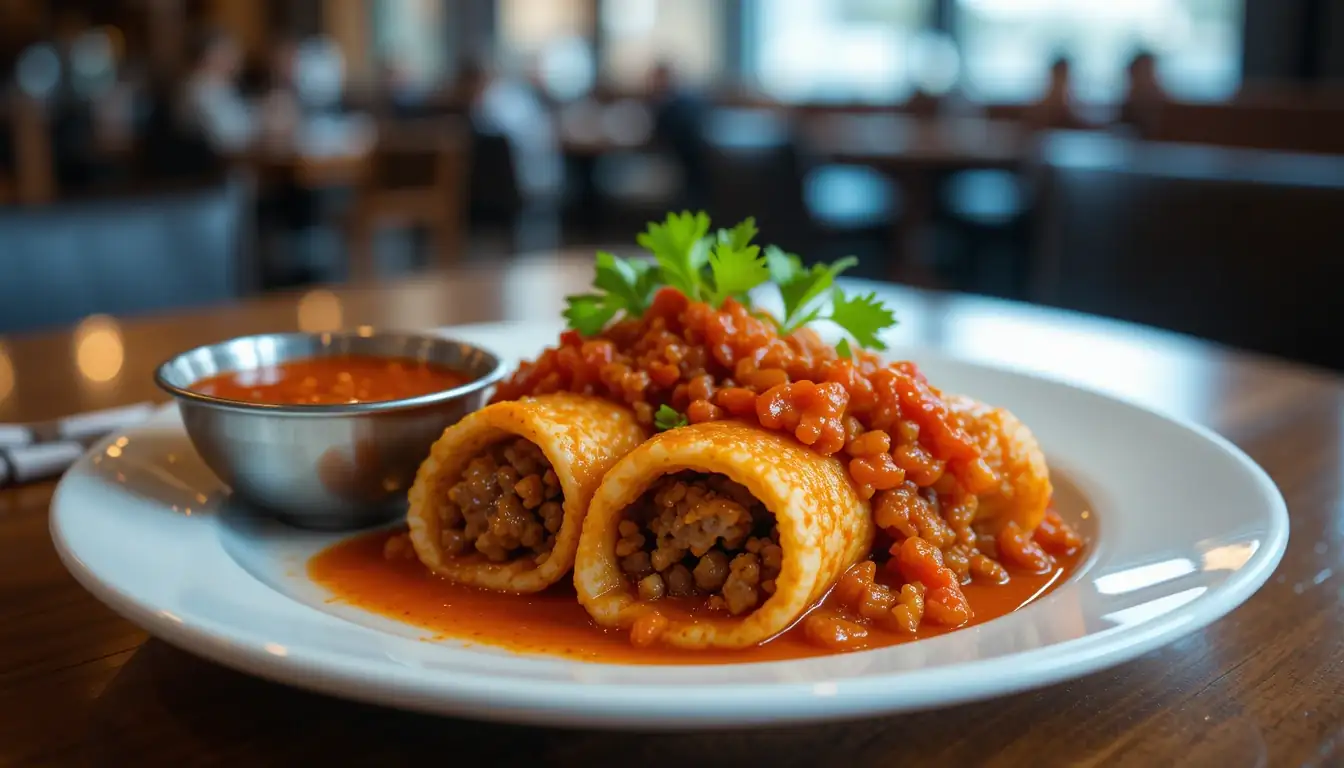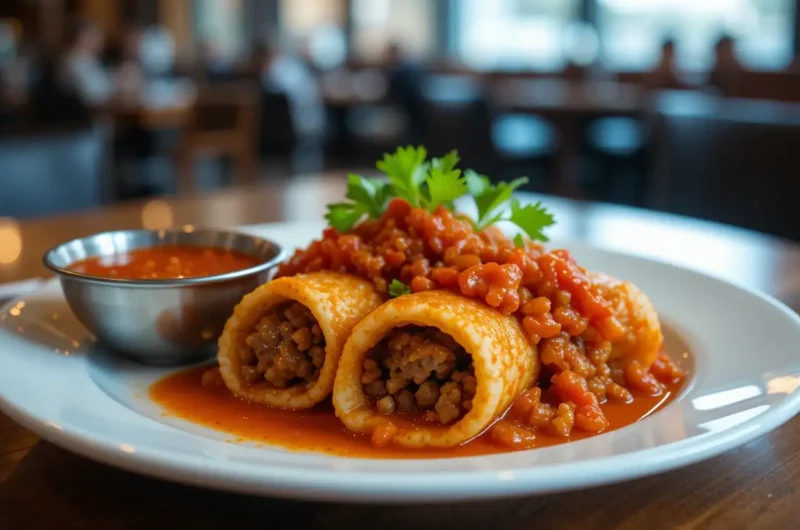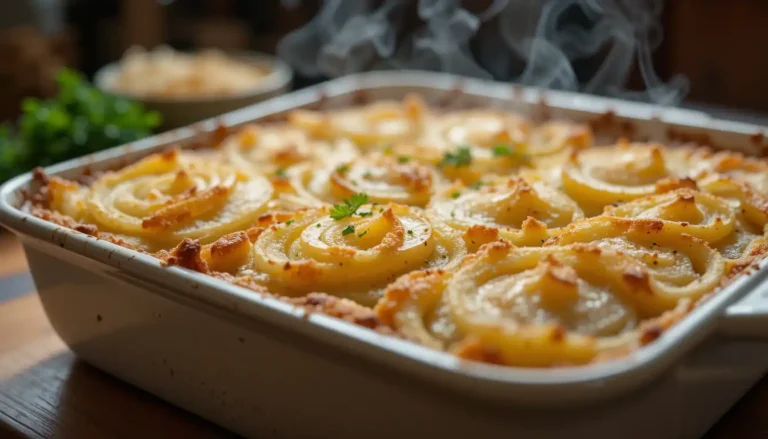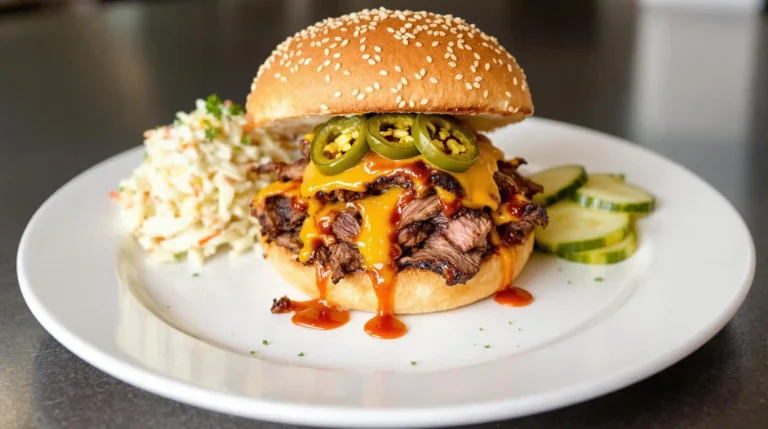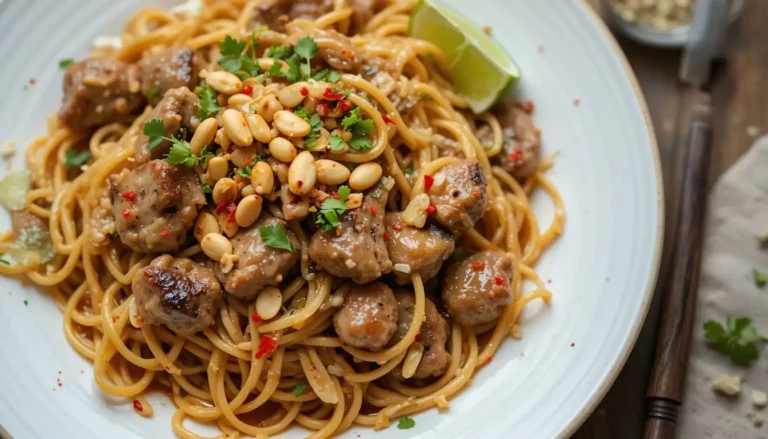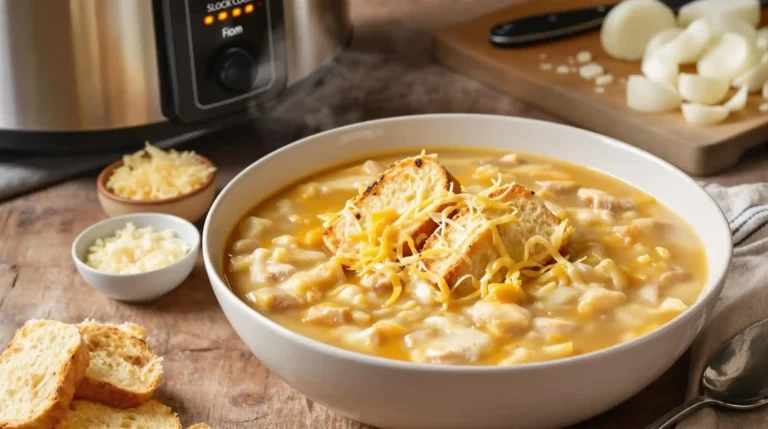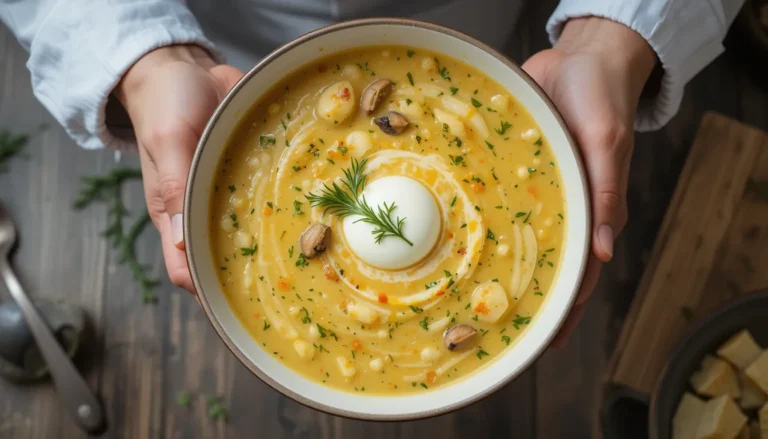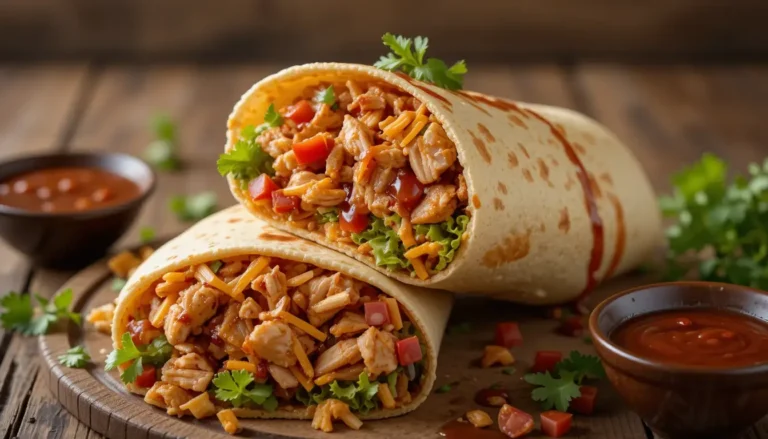Discover the Delight of Bolivian Salteñas: A Step-by-Step Recipe
Bolivian cuisine is a vibrant tapestry of flavors, influenced by indigenous traditions and Spanish colonial heritage. Among its many culinary treasures, Bolivian Salteñas stand out as a beloved and iconic pastry. These savory, juicy, and slightly sweet baked empanadas are a staple in Bolivia, enjoyed throughout the day, from breakfast to afternoon snacks.
If you’re looking to embark on a flavorful culinary adventure, learning how to make authentic Bolivian Salteñas is a must. This comprehensive guide will walk you through each step, ensuring you can recreate this Bolivian delight in your own kitchen.
What are Bolivian Salteñas?
Bolivian Salteñas are essentially baked empanadas, but with a distinct Bolivian twist. They are characterized by their:
- Savory and Slightly Sweet Filling: The heart of the salteña is a rich and flavorful stew, typically made with beef, chicken, or a combination of both, along with onions, peas, olives, raisins, and a blend of Bolivian spices. The filling has a unique balance of savory and sweet notes, making it incredibly addictive.
- Juicy “Jelly” or Broth: A signature element of salteñas is the gelatinous broth that forms inside during baking. This “jelly” adds an extra layer of flavor and moisture, making each bite incredibly satisfying.
- Slightly Sweet Dough: The dough itself is subtly sweet, providing a perfect counterpoint to the savory filling. It’s often enriched with achiote (annatto) for a beautiful golden color.
- Distinct Shape: Salteñas have a characteristic teardrop or boat shape, sealed with a decorative braid or twist along the top.
History and Origin of Bolivian Salteñas
The history of Bolivian Salteñas is as rich and flavorful as the pastry itself. While the exact origins are debated, the most popular story attributes their creation to Juana Manuela Gorriti, an Argentine writer who was exiled to Bolivia in the 19th century.
Legend has it that Juana Manuela, facing financial difficulties, began selling these savory pastries to support herself and her family. Her pastries, initially called “salteñas” (from “Salteña,” meaning “woman from Salta,” her Argentine hometown), quickly gained popularity. Over time, the recipe evolved and became deeply ingrained in Bolivian culinary culture.
Whether the legend is entirely accurate or not, Bolivian Salteñas are undoubtedly a product of cultural exchange and adaptation, reflecting the diverse influences that have shaped Bolivian gastronomy.
Why are Salteñas so Popular?
Bolivian Salteñas have captured the hearts (and stomachs) of Bolivians and food lovers worldwide for several reasons:
- Flavor Explosion: The complex blend of savory, sweet, and spicy flavors in the filling is truly unique and irresistible.
- Satisfying and Hearty: Salteñas are substantial enough to be a light meal or a satisfying snack.
- Cultural Icon: They are deeply rooted in Bolivian culture and tradition, representing a taste of home and heritage.
- Versatile: Enjoyed at any time of day, from breakfast to late-night cravings, salteñas fit seamlessly into the Bolivian lifestyle.
- Handheld Delight: Their convenient, handheld format makes them perfect for enjoying on the go or at social gatherings.
Ingredients for Bolivian Salteñas
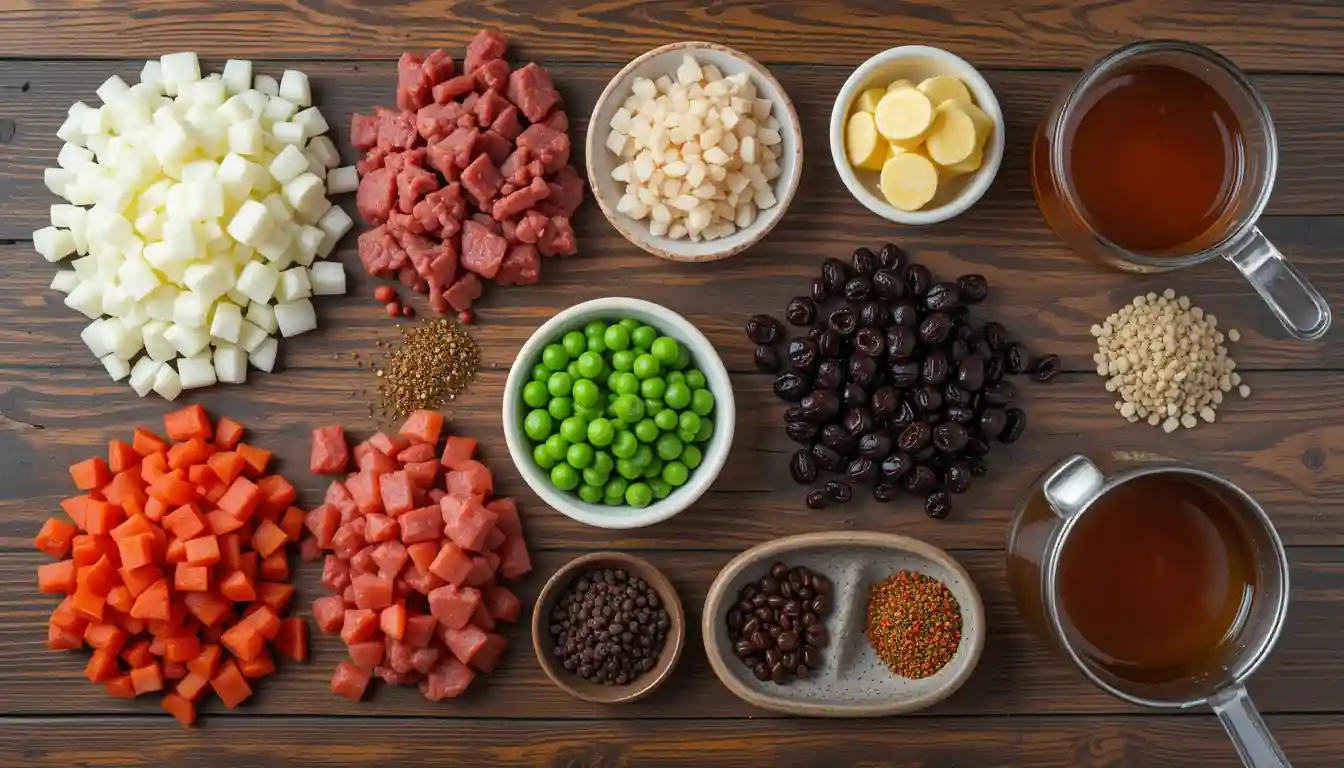
To create authentic Bolivian Salteñas, you’ll need to gather the following ingredients. Don’t be intimidated by the list; each component plays a crucial role in the final flavor and texture.
For the Dough:
- 500g all-purpose flour
- 1 tsp salt
- 1 tbsp sugar
- 100g lard or vegetable shortening, cold and cubed
- 250ml warm water
- 1 tbsp achiote powder (annatto powder) or paprika (for color)
For the Filling:
- 500g beef or chicken (or a mix), diced into small cubes
- 2 large onions, finely chopped
- 2 cloves garlic, minced
- 1 red bell pepper, finely diced
- 1 cup frozen peas
- 1/2 cup raisins
- 1/2 cup black olives, halved or quartered
- 2 hard-boiled eggs, chopped (optional, but traditional)
- 1 tbsp ají panca paste (Peruvian red pepper paste) or smoked paprika
- 1 tsp cumin
- 1 tsp oregano
- 1/2 tsp black pepper
- Salt to taste
- 2 tbsp vegetable oil
For the “Jelly” or Broth:
- 4 cups beef or chicken broth
- 3 tbsp unflavored gelatin powder
- 1 tbsp cornstarch (optional, for thicker jelly)
For the Egg Wash:
- 1 egg, beaten
- 1 tbsp milk
Step-by-Step Guide to Making Bolivian Salteñas
Now, let’s get to the exciting part – making Bolivian Salteñas! Follow these detailed steps for a delicious homemade batch.
Preparing the Dough:
- Combine Dry Ingredients: In a large bowl, whisk together the flour, salt, and sugar.
- Incorporate Fat: Add the cold, cubed lard or shortening to the flour mixture. Using your fingertips or a pastry blender, cut the fat into the flour until the mixture resembles coarse crumbs.
- Add Color (Optional): Stir in the achiote powder or paprika for color.
- Gradually Add Water: Slowly pour in the warm water while mixing with your hands or a spoon until a dough forms.
- Knead the Dough: Turn the dough out onto a lightly floured surface and knead for 5-7 minutes, or until smooth and elastic.
- Rest the Dough: Form the dough into a ball, wrap it in plastic wrap, and let it rest at room temperature for at least 30 minutes (or up to 1 hour). This resting period is crucial for the dough to relax and become easier to work with.
Making the Filling:
- Sauté Aromatics: Heat vegetable oil in a large pot or Dutch oven over medium heat. Add the chopped onions and cook until softened, about 5 minutes. Add the minced garlic and diced bell pepper and cook for another 2-3 minutes until fragrant.
- Brown the Meat: Add the diced beef or chicken (or both) to the pot and cook until browned on all sides.
- Add Spices and Paste: Stir in the ají panca paste (or smoked paprika), cumin, oregano, black pepper, and salt. Cook for 1 minute more, allowing the spices to bloom.
- Add Broth and Simmer: Pour in the beef or chicken broth. Bring the mixture to a boil, then reduce heat to low, cover, and simmer for 1-1.5 hours, or until the meat is tender and the sauce has slightly thickened.
- Prepare the Jelly: While the filling is simmering, prepare the “jelly.” In a separate bowl, whisk together the gelatin powder and cornstarch (if using). Gradually whisk in about 1 cup of the hot broth from the filling pot until the gelatin is dissolved and smooth. Pour this gelatin mixture back into the pot with the filling and stir well to combine.
- Add Remaining Ingredients: Stir in the frozen peas, raisins, olives, and chopped hard-boiled eggs (if using). Cook for another 5 minutes until the peas are heated through.
- Chill the Filling: Remove the pot from the heat and let the filling cool completely to room temperature. Then, cover and refrigerate for at least 4-6 hours, or preferably overnight. This chilling process is essential for the “jelly” to set properly and for the flavors to meld together beautifully. The filling should be quite thick and gelatinous when chilled.
Assembling the Salteñas:
- Preheat Oven and Prepare Baking Sheets: Preheat your oven to 375°F (190°C). Line baking sheets with parchment paper.
- Divide and Roll Dough: Divide the rested dough into small, equal-sized balls (about 2-2.5 inches in diameter). On a lightly floured surface, roll out each dough ball into a thin circle, about 4-5 inches in diameter.
- Fill the Dough: Place a generous spoonful of the chilled filling in the center of each dough circle.
- Seal the Salteñas: Bring the edges of the dough up and over the filling, pinching them together to form a teardrop or boat shape. Create a decorative braid or twist along the top seam to seal the salteña securely. This sealing technique is important to prevent the filling from leaking during baking.
- Egg Wash: In a small bowl, whisk together the egg and milk to make the egg wash. Brush the tops of each salteña with the egg wash for a golden and glossy finish.
Baking the Salteñas:
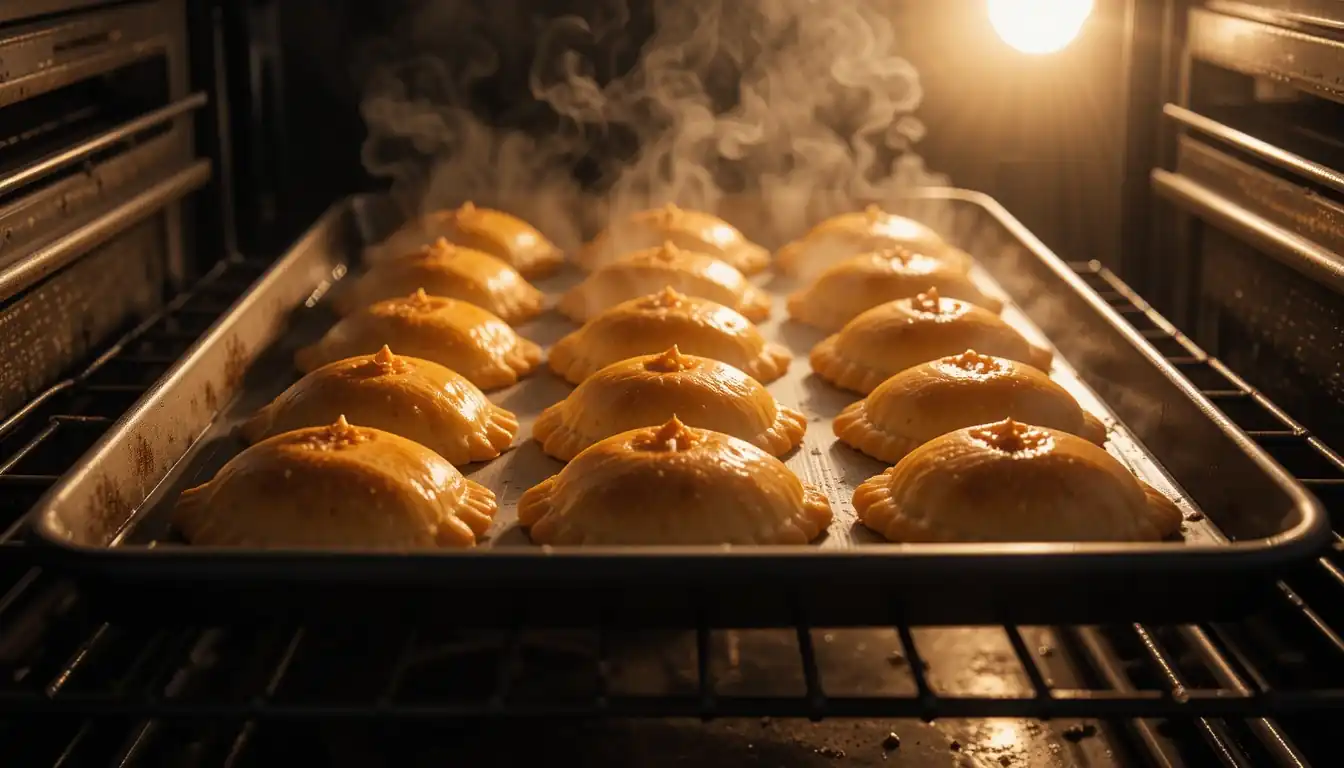
- Bake: Arrange the assembled salteñas on the prepared baking sheets, leaving some space between them.
- Baking Time: Bake for 25-30 minutes, or until the salteñas are golden brown and the dough is cooked through.
- Cool Slightly: Let the baked salteñas cool on the baking sheets for a few minutes before serving. Be careful, the filling will be very hot!
Tips and Tricks for Perfect Salteñas
- Cold Fat is Key: Using cold lard or shortening is crucial for a flaky and tender dough.
- Chill the Filling Thoroughly: Chilling the filling overnight is highly recommended. This allows the “jelly” to set properly and makes the filling easier to handle when assembling the salteñas.
- Don’t Overfill: While you want a generous filling, avoid overfilling the salteñas, as this can make them difficult to seal and prone to bursting during baking.
- Seal Tightly: Ensure the salteñas are sealed tightly to prevent the juicy filling from leaking out. The braided or twisted seam not only looks decorative but also provides a secure seal.
- Bake Until Golden: Bake the salteñas until they are nicely golden brown, indicating that the dough is fully cooked.
- Be Patient with the Jelly: The “jelly” inside the salteñas is what makes them truly special. Don’t be tempted to skip the gelatin step.
- Serve Warm: Salteñas are best enjoyed warm, when the filling is still juicy and flavorful.
Serving and Enjoying Salteñas
Bolivian Salteñas are traditionally enjoyed as a snack or light meal. Here are some popular ways to serve and enjoy them:
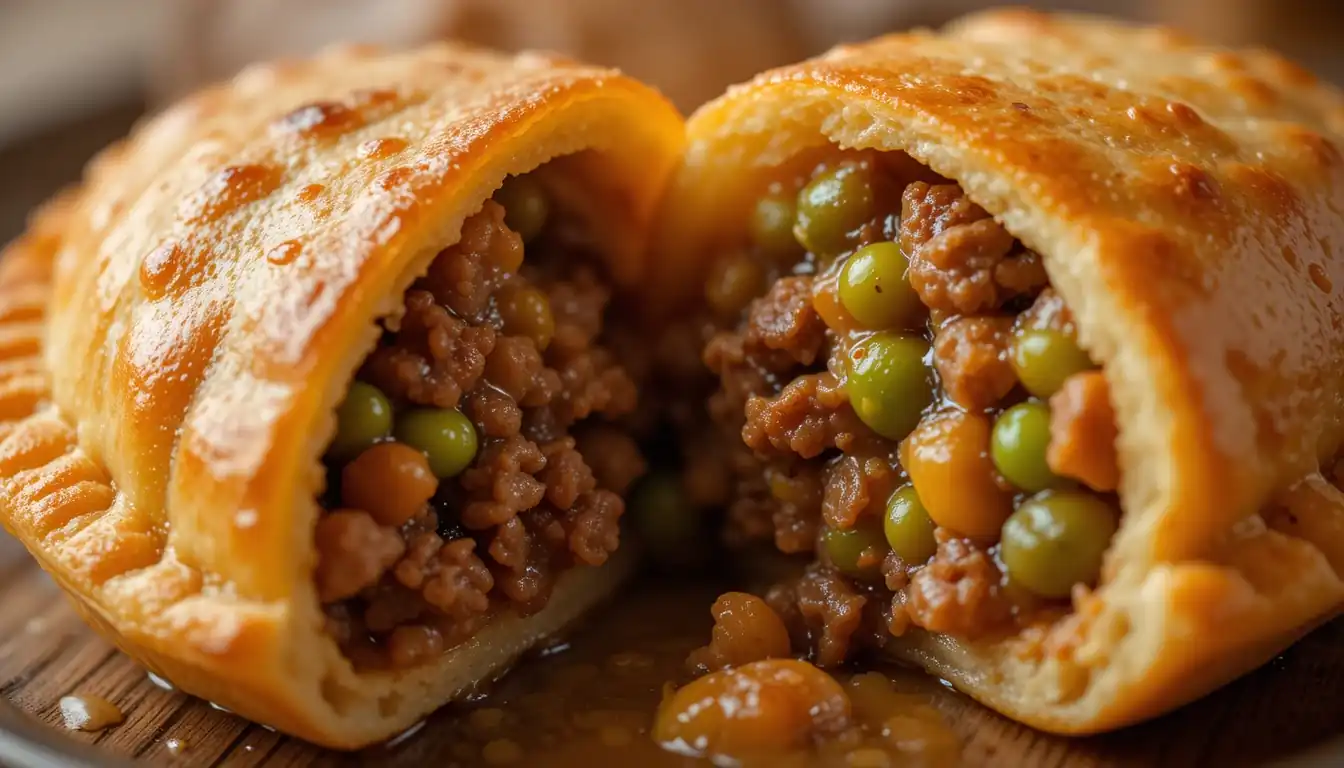
- As a Snack: Grab a salteña for a satisfying afternoon snack or a quick bite on the go.
- For Breakfast: Start your day with a flavorful and energizing salteña.
- With Llajua (Bolivian Hot Sauce): For an authentic Bolivian experience, serve salteñas with llajua, a spicy Bolivian salsa made with locoto peppers (rocoto peppers), tomatoes, and herbs. The heat of the llajua complements the richness of the salteña beautifully.
- With a Drink: Enjoy salteñas with a refreshing beverage like a Bolivian soft drink, chicha morada (purple corn drink), or a cold beer.
- At Celebrations: Salteñas are often served at parties, gatherings, and special occasions in Bolivia.
Variations of Salteñas
While the classic beef or chicken salteña is the most common, there are some delicious variations to explore:
- Chicken Salteñas: Made with chicken instead of beef, offering a slightly lighter flavor profile.
- Vegetarian Salteñas: Filled with a mix of vegetables like potatoes, carrots, peas, corn, and sometimes cheese.
- Spicy Salteñas (Picantes): With added ají amarillo (yellow pepper) or locoto peppers for extra heat.
- Sweet Salteñas (Salteñas Dulces): A less common but interesting variation with a sweet filling, sometimes made with fruit or dulce de leche.
Conclusion
Making Bolivian Salteñas at home is a rewarding culinary experience. While it requires some time and effort, the result is a truly unique and delicious pastry that will transport you to the heart of Bolivia with every bite. From the savory-sweet filling to the juicy “jelly” and the slightly sweet dough, Bolivian Salteñas are a testament to the rich and flavorful culinary heritage of Bolivia. So, gather your ingredients, follow this recipe, and prepare to be amazed by the magic of homemade Bolivian Salteñas! ¡Buen provecho!
Recipe Card
Discover the Delight of Bolivian Salteñas: A Step-by-Step Recipe
Course: PastryCuisine: Bolivian4
servings2
hours30
minutes450
kcal2
hours30
minutesSavory and juicy Bolivian baked empanadas with a unique sweet and savory filling and a signature gelatinous broth. Perfect for snacks, breakfast, or light meals.
Ingredients
- For the Dough:
500g all-purpose flour
1 tsp salt
1 tbsp sugar
100g lard or vegetable shortening, cold and cubed
250ml warm water
1 tbsp achiote powder (annatto powder) or paprika (for color)
- For the Filling:
500g beef or chicken (or a mix), diced into small cubes
2 large onions, finely chopped
2 cloves garlic, minced
1 red bell pepper, finely diced
1 cup frozen peas
1/2 cup raisins
1/2 cup black olives, halved or quartered
2 hard-boiled eggs, chopped (optional)
1 tbsp ají panca paste (or smoked paprika)
1 tsp cumin
1 tsp oregano
1/2 tsp black pepper
Salt to taste
2 tbsp vegetable oil
- For the “Jelly” or Broth:
4 cups beef or chicken broth
3 tbsp unflavored gelatin powder
1 tbsp cornstarch (optional)
- For the Egg Wash:
1 egg, beaten
1 tbsp milk
- Equipment:
Large Bowl
Pastry Blender or fingertips
Large Pot or Dutch Oven
Baking Sheets
Parchment Paper
Directions
- Making the Dough:
- In a large bowl, whisk together flour, salt, and sugar.
- Cut in cold lard/shortening until crumbly. Stir in achiote/paprika (optional).
- Gradually add warm water, mixing until dough forms.
- Knead on floured surface for 5-7 minutes until smooth.
- Form into a ball, wrap in plastic wrap, and rest for 30-60 minutes.
- Making the Filling:
- Heat oil in a large pot. Sauté onions until soft, add garlic and bell pepper, cook until fragrant.
- Brown diced beef/chicken.
- Stir in ají panca paste (or smoked paprika), cumin, oregano, black pepper, and salt. Cook for 1 minute.
- Add broth, bring to boil, then simmer covered for 1-1.5 hours until meat is tender.
- Prepare “jelly”: Whisk gelatin and cornstarch (if using) with 1 cup hot broth until smooth. Pour back into the pot, stir well.
- Stir in peas, raisins, olives, and chopped eggs (if using). Cook 5 minutes.
- Cool filling to room temperature, then refrigerate 4-6 hours or overnight until chilled and gelatinous.
- Assembling and Baking:
- Preheat oven to 375°F (190°C). Line baking sheets with parchment paper.
- Divide dough into small balls. Roll each into a 4-5 inch circle.
- Place a spoonful of chilled filling in the center of each dough circle.
- Bring edges up and over filling, pinch to seal into a teardrop shape. Create a decorative braid/twist along the top.
- Brush tops with egg wash (beaten egg and milk).
- Bake for 25-30 minutes, or until golden brown.
- Cool slightly before serving.
Notes
- Serve warm as a snack, breakfast, or light meal.
Enjoy with Llajua (Bolivian hot sauce) for an authentic experience.

